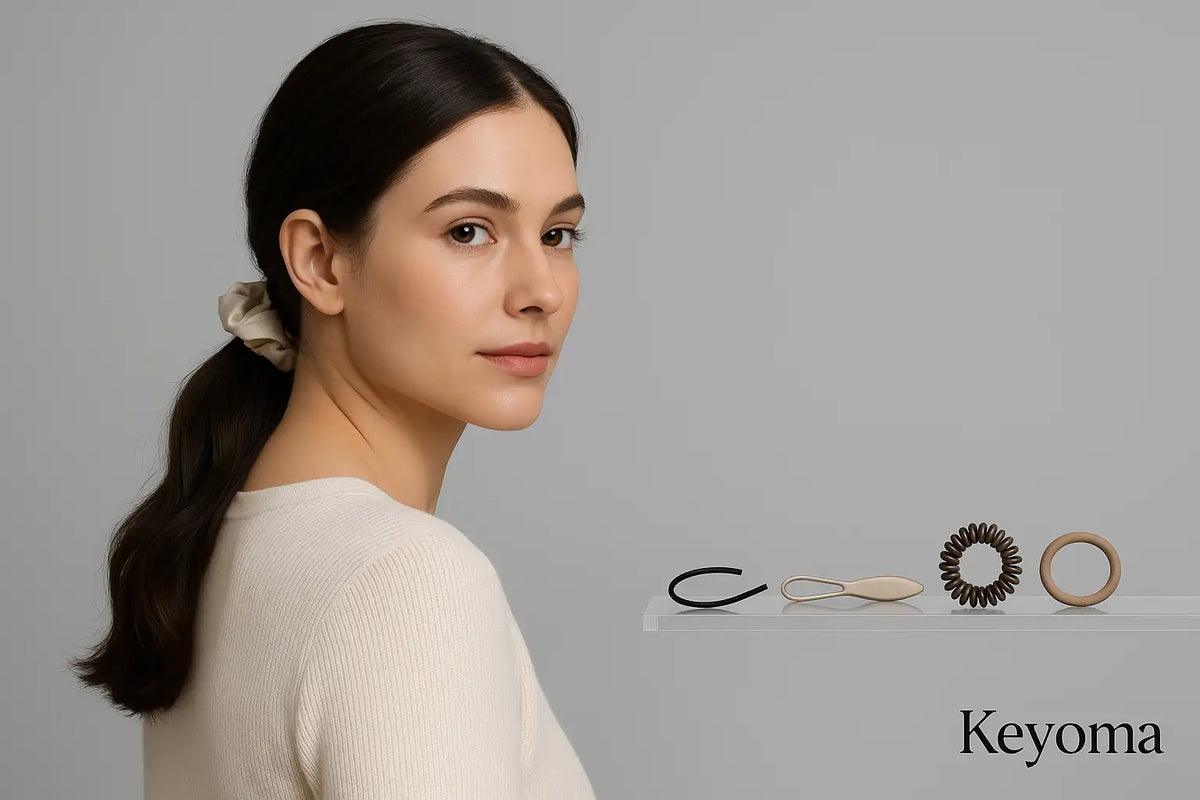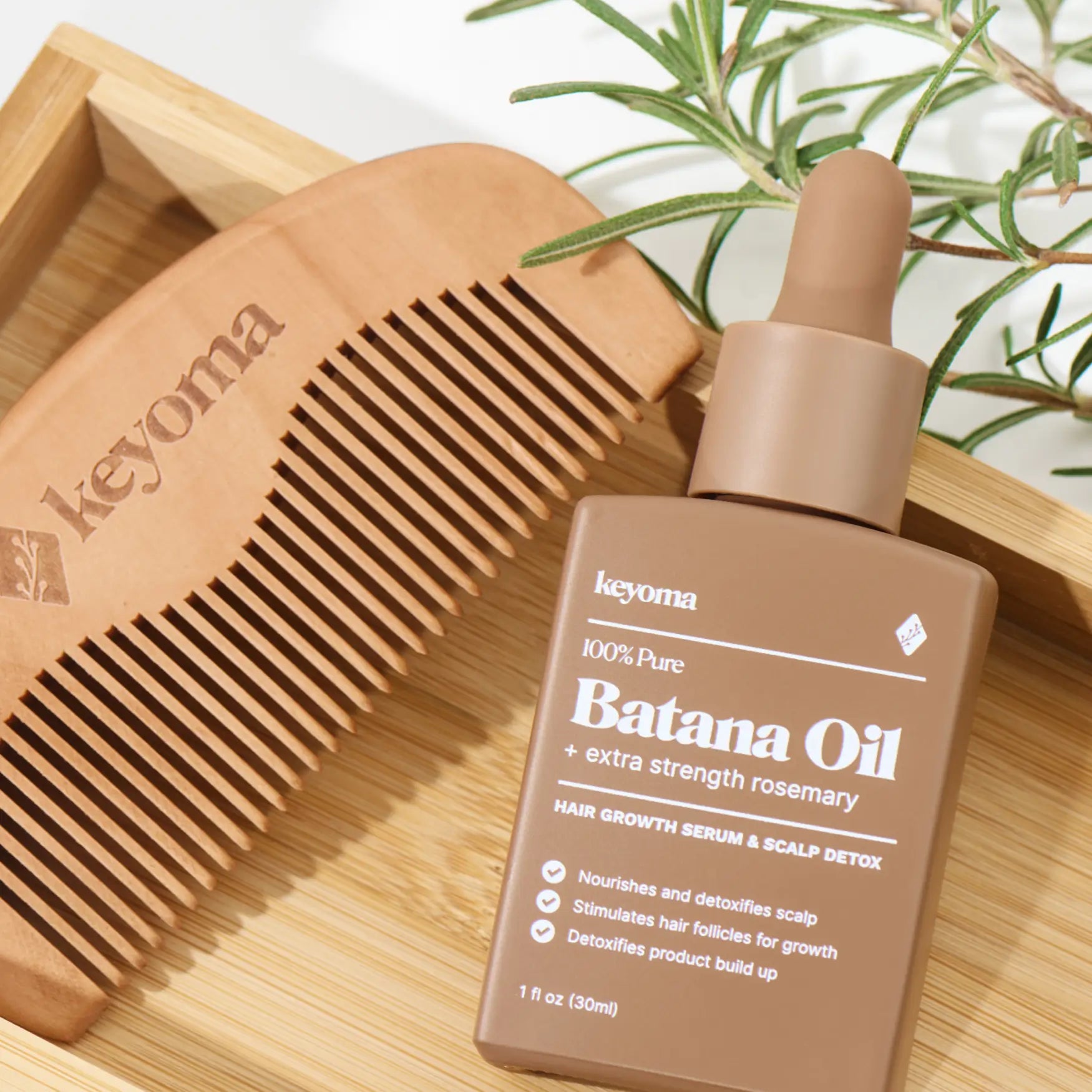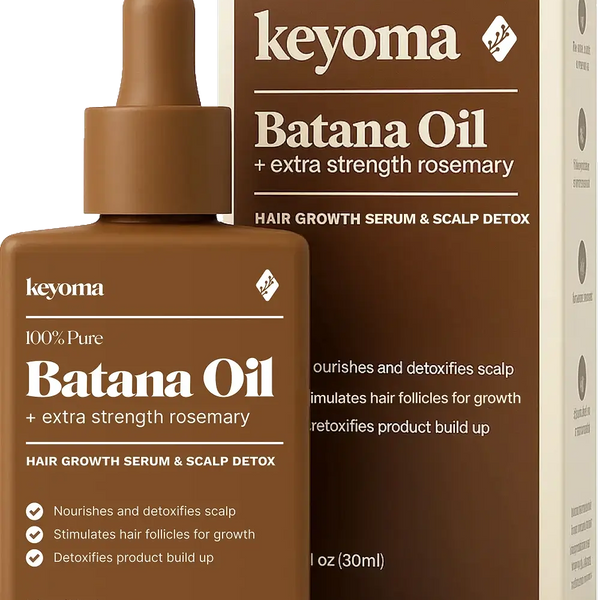In this article
When hair keeps falling in your face or you feel hot, a rubber band can seem handy for a quick tie-up.
Grabbing a rubber band at work can feel clever when you need hair out of the way, but it isn’t the best pick for your strands.
Rubber bands are tough on all hair types, though some textures snag and tangle more than others.
People often secure small braids or locs with tiny rubber bands. Both styles look great, at least until you have to take those bands out.
Key Takeaways
-
Rubber bands often snag and damage strands, especially when removing braids or dreadlocks.
-
Material and design affect damage risk; silk, satin, and cotton ties are gentler.
-
Silicone provides strong grip but can pull hair; latex ties may cause allergies.
-
Hair ties do not cause permanent hair loss, but tight, repeated use increases breakage.
What Hair Ties Are Made Of

Hair ties, also called hair bands or elastics, show up everywhere to hold and style hair. They’re made from different materials, and each one trades off comfort, durability, and look.
The most common options are rubber, fabric, and elastic. Rubber ties are strong, stretchy, and cheap, which is why they’re popular, but their rough surface can scuff the hair shaft.
Fabric-covered ties are gentler and come in many styles and patterns.
Elastic styles are another favorite because they stretch well and last. They’re made from synthetic polymers woven into a flexible band and tend to keep their shape after repeated wear.
Many now include fabric covers to be kinder to hair.
Silicone and latex show up too. Silicone ties resist water and grip firmly, so they’re useful for workouts, but that strong hold can tug and snap strands.
Latex versions are stretchy and durable, though they can trigger allergies in some people.
Common Types of Hair Ties
Walk the hair-accessory aisle and you’ll see countless ways to pull hair back. Here are some of the most common ties to know.

Spiral Coil Hair Ties
People also call these coil or telephone-cord elastics, and they’re ideal for a messy updo. They’re injection-molded so the coils are seamless. This style can work well if your hair already has some breakage.
They also come in lots of looks, from solid colors to metallics, glitter, and patterns, so they double as an accessory.
Elastic Hair Ties (Traditional)
These are the classic ties you can grab in bulk at most drugstores. Many people wear them alone, but you can also layer them under decorative clips or barrettes to add flair and keep styles secure.
Hair Scrunchies
Scrunchies wrap an elastic with fabric in different widths and materials, and they offer the most personality. You can go bold or match them to your outfit.
Another plus is their gentle feel on strands, and choosing silk may keep hair back with less friction while you sleep.
Seamless Hair Ties (No Seam)
These are a small upgrade from standard ties. Often made from nylon, they’re rolled into ring shapes, so there’s no glued seam. Their soft feel makes them a solid pick for workouts, yet they can be tied firmly.
Polyband Hair Ties for Updos
These tiny rubber bands help build intricate updos because they hold small sections precisely. They’re also handy for sealing braid ends and pinning back bangs. If you want a small tie with less risk, look for softer versions in this style.
No-Crease Hair Ties (Flat Elastic)
No-crease ties became a crowd favorite for a while, showing up everywhere. They’re usually wider, made from flat elastic with a single knot, and the soft, broad band helps prevent dents.
Which Hair Ties Are Healthiest?
Material comes first when you want the healthiest option. Ties made from silk, satin, or cotton are strong picks. These feel gentler on hair and tend to pull less, which may limit breakage.
Also think about the design. Common elastic ties can rub and cause friction damage. A gentler style that doesn’t tug is the safer route.
How to Remove Hair Ties Safely
If you’re already wrestling with a rubber band or tight tie, use these tricks to take it out safely and avoid unnecessary strand damage.

1. Use a Hair Tie Cutter
The safest method for removing a rubber tie is a purpose-made cutter. You may feel tempted to grab regular scissors, but skip them. If you don’t want a surprise chop, take your time and cut only the band.
2. Use a Seam Ripper
No tie cutter around? A seam ripper is a safer backup than scissors. Slide it between two layers of the band, keeping the point off your hair so you don’t nick strands.
3. Try a Curling Wand
As a last resort, use the cool end of a curling iron to melt through a rubber tie. Warm the wand briefly, then touch it to the band for a few seconds so it releases on its own. While TikTok and YouTube love this hack, the better plan is to avoid harsh rubber ties in the first place.
Do Hair Ties Cause Hair Loss?
Short answer: no, these accessories don’t cause permanent hair loss, even with regular use. The real risk is short-term breakage or damage from overuse, so try not to sleep in them.
That’s especially true of hair ties, which often sit tightly and limit natural movement. Pulling hair into a very tight pony or bun adds tension that can lead to breakage.
Damage also builds when ties are too tight or you clip hair up in the same spot day after day.
There’s one trick to better hair-tie habits: slow down. I found pausing before the last wrap helped me loosen tension. Move mindfully as you gather hair into a ponytail or bun to lower snag risk, and adjust the tightness so your scalp gets a break.
Reduce Hair Breakage With Keyoma
Stop sizing a ponytail by tightness. Size it by comfort and removal risk. Slide a small gap under the band with your fingertips. If you cannot, loosen or switch to a wider, seamless tie. When you are stuck, cut it. Carry a hair tie cutter or use a seam ripper instead of yanking.
Skip bare rubber unless it is temporary. If you feel scalp tenderness or see dents within two hours, move the style and lighten tension for the rest of the week.
Featured Product
100% Pure Batana Oil + Rosemary









